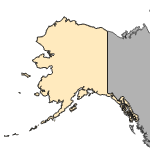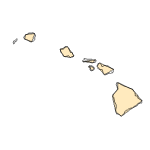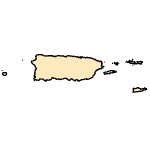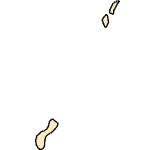Hyphessobrycon eques
(serpae tetra)
Fishes
Exotic |
|
Common name: serpae tetra
Synonyms and Other Names: H. callistus (Boulenger, 1900), H. serpae Durbin in Eigenmann, 1908; jewel tetra, red minor tetra, blood tetra.
Taxonomy: available through
www.itis.gov
Identification: According to Géry (1977), the genus Hyphessobrycon contains approximately 65 species and needs systematic revision. Hyphessobrycon eques is a species complex and includes the junior synonym H. serpae (Weitzman and Palmer 1997). See Géry for an identification key and a color photograph. A color photograph was also published in Axelrod et al. (1985).
Size: 4 cm.
Native Range: Tropical America. Central Amazon basin and Guianas (Géry 1977).



|

Alaska |

Hawaii |

Puerto Rico &
Virgin Islands |

Guam Saipan |
Hydrologic Unit Codes (HUCs) Explained
Interactive maps: Point Distribution Maps
Nonindigenous Occurrences:
Table 1. States with nonindigenous occurrences, the earliest and latest observations in each state, and the tally and names of HUCs with observations†. Names and dates are hyperlinked to their relevant specimen records. The list of references for all nonindigenous occurrences of Hyphessobrycon eques are found here.
Table last updated 12/19/2025
† Populations may not be currently present.
Means of Introduction: Likely aqarium release.
Status: Failed in Florida.
Impact of Introduction: The impacts of this species are currently unknown, as no studies have been done to determine how it has affected ecosystems in the invaded range. The absence of data does not equate to lack of effects. It does, however, mean that research is required to evaluate effects before conclusions can be made.
References: (click for full references)
Axelrod, H.R., W.E. Burgess, N. Pronek, and J.G. Walls. 1985. Dr. Axelrod's atlas of freshwater aquarium fishes. Tropical Fish Hobbyist Publications, Inc., Neptune City, NJ.
FL DNR - Florida Department of Natural Resources.
Géry, J. 1977. Characoids of the world. Tropical Fish Hobbyist Publications, Inc., Neptune City, NJ.
Weitzman, S.H. and L. Palmer. 1997. A new species of Hyphessobrycon (Teleostei: Characidae) from Neblina region of Venezuela and Brazil, with comments on the putative 'rosy tetra clade'. Ichthyological Exploration of Freshwater 7(3):209-242.
FishBase Summary
Author:
Nico, L.
Revision Date: 6/22/2012
Peer Review Date: 6/22/2012
Citation Information:
Nico, L., 2025, Hyphessobrycon eques (Steindachner, 1882): U.S. Geological Survey, Nonindigenous Aquatic Species Database, Gainesville, FL, https://nas.er.usgs.gov/queries/FactSheet.aspx?speciesID=422, Revision Date: 6/22/2012, Peer Review Date: 6/22/2012, Access Date: 12/19/2025
This information is preliminary or provisional and is subject to revision. It is being provided to meet the need for timely best science. The information has not received final approval by the U.S. Geological Survey (USGS) and is provided on the condition that neither the USGS nor the U.S. Government shall be held liable for any damages resulting from the authorized or unauthorized use of the information.